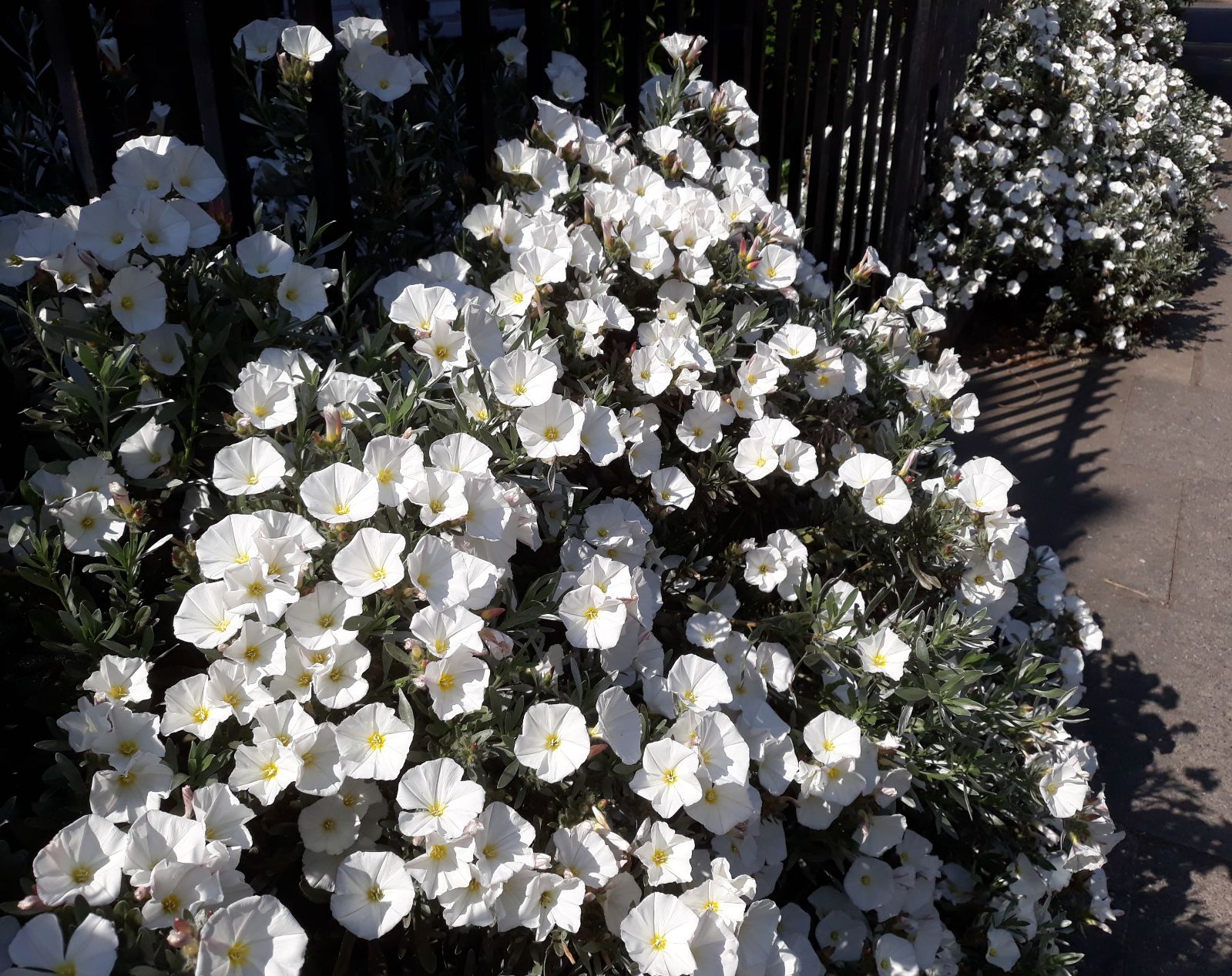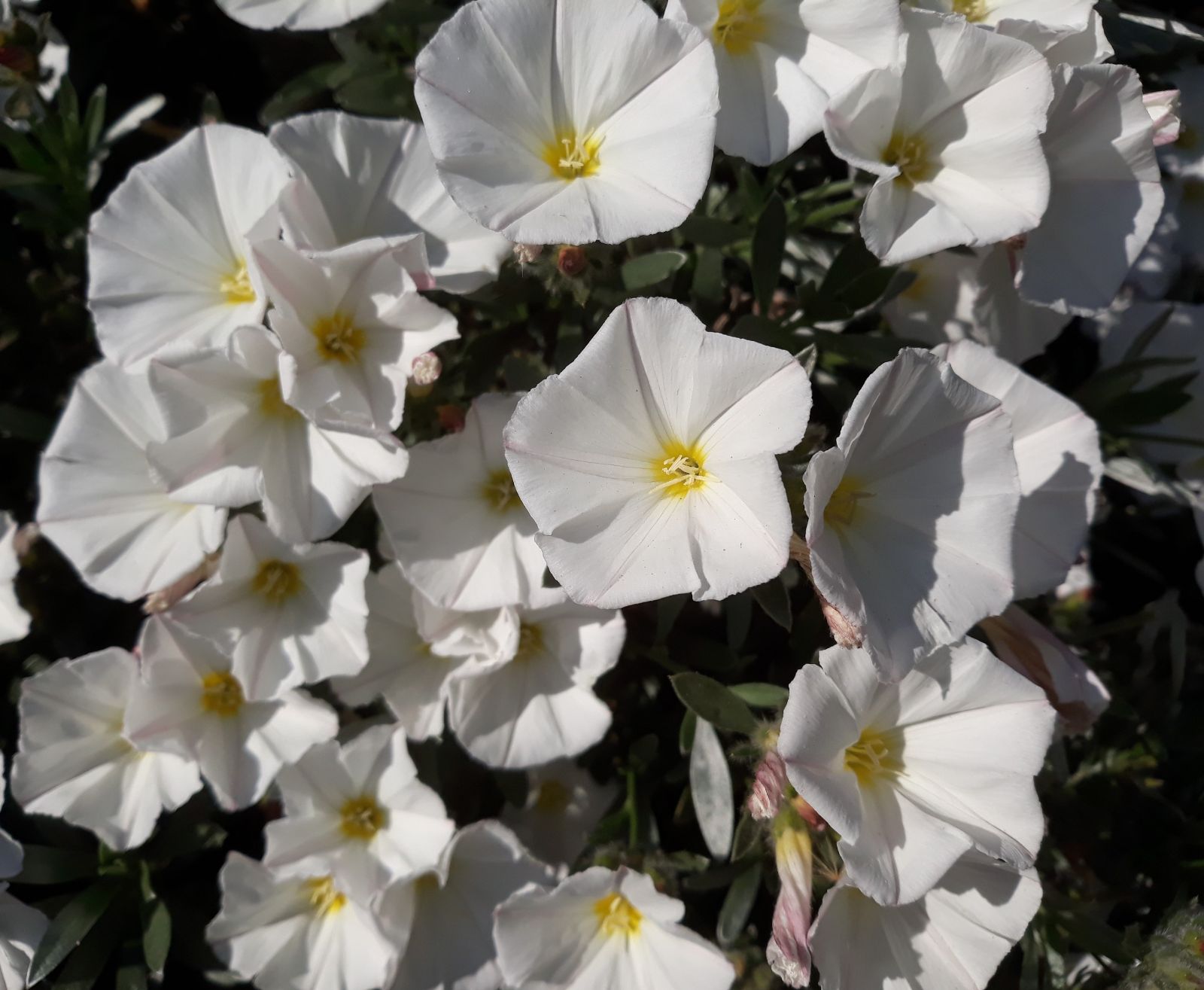Convolvulus cneorum
Credits
Article from Bean's Trees and Shrubs Hardy in the British Isles
Recommended citation
'Convolvulus cneorum' from the website Trees and Shrubs Online (treesandshrubsonline.
Genus
Other taxa in genus
An evergreen, very leafy shrub 2 to 3 ft high, covered with silky hairs that give the entire younger part of the plant a beautiful silvery aspect. Leaves shortly stalked, alternate, narrowly oblong or oblanceolate, 1 to 21⁄2 in. long, 1⁄8 to 1⁄2 in. wide, always tapered at the base, but either pointed or rounded at the apex. Flowers in a terminal umbel, but opening successively during the summer; they are of the trumpet-mouthed type common to ‘morning glory’, being 11⁄4 in. long, rather more across, of flimsy texture, white tinged with pink, yellow in the tube; calyx as long as the corolla-tube, silky. Bot. Mag., t. 459.
Native of S. Europe; cultivated in England, according to Aiton, in 1640. It is not quite hardy near London except against a wall, but thrives in the south and west. There are five strips of silky hairs traversing the corolla lengthwise outside. The specific epithet chosen by Linnaeus derives from the Greek ‘kneoron’ (see introduction to the genus Cneorum). It needs a dry, sunny spot, and can be increased very readily by cuttings taken during the summer, and placed in gentle heat.


